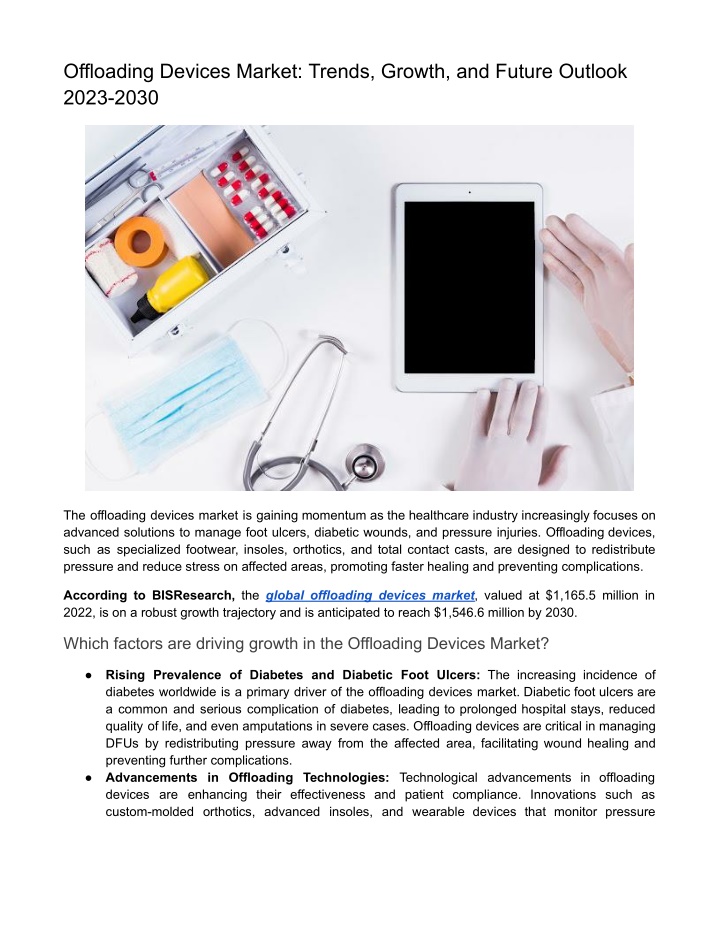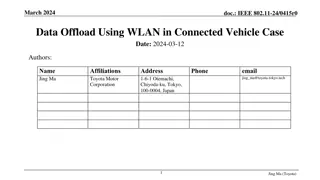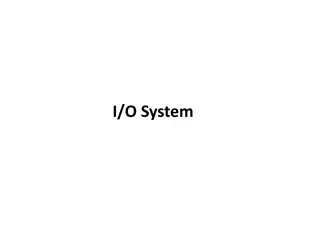
Offloading Devices Market Trends, Growth, and Future Outlook
The global offloading devices market, valued at $1,165.5 million in 2022, is on a robust growth trajectory and is anticipated to reach $1,546.6 million by 2030.nnRead Report Overview: //bisresearch.com/industry-report/offloading-devices-market.
Download Presentation

Please find below an Image/Link to download the presentation.
The content on the website is provided AS IS for your information and personal use only. It may not be sold, licensed, or shared on other websites without obtaining consent from the author. If you encounter any issues during the download, it is possible that the publisher has removed the file from their server.
You are allowed to download the files provided on this website for personal or commercial use, subject to the condition that they are used lawfully. All files are the property of their respective owners.
The content on the website is provided AS IS for your information and personal use only. It may not be sold, licensed, or shared on other websites without obtaining consent from the author.
E N D
Presentation Transcript
Offloading Devices Market: Trends, Growth, and Future Outlook 2023-2030 The offloading devices market is gaining momentum as the healthcare industry increasingly focuses on advanced solutions to manage foot ulcers, diabetic wounds, and pressure injuries. Offloading devices, such as specialized footwear, insoles, orthotics, and total contact casts, are designed to redistribute pressure and reduce stress on affected areas, promoting faster healing and preventing complications. According to BISResearch, the global offloading devices market, valued at $1,165.5 million in 2022, is on a robust growth trajectory and is anticipated to reach $1,546.6 million by 2030. Which factors are driving growth in the Offloading Devices Market? Rising Prevalence of Diabetes and Diabetic Foot Ulcers: The increasing incidence of diabetes worldwide is a primary driver of the offloading devices market. Diabetic foot ulcers are a common and serious complication of diabetes, leading to prolonged hospital stays, reduced quality of life, and even amputations in severe cases. Offloading devices are critical in managing DFUs by redistributing pressure away from the affected area, facilitating wound healing and preventing further complications. Advancements in Offloading Technologies: Technological advancements in offloading devices are enhancing their effectiveness and patient compliance. Innovations such as custom-molded orthotics, advanced insoles, and wearable devices that monitor pressure
distribution are improving patient outcomes. These advancements are driving market growth by offering more effective and user-friendly solutions for DFU management. Growing Awareness of Diabetic Foot Care: Increased awareness of the importance of diabetic foot care among healthcare providers and patients is contributing to the market's expansion. Educational initiatives and guidelines from organizations like the International Diabetes Federation (IDF) and the American Diabetes Association (ADA) emphasize the importance of offloading devices in preventing and managing DFUs. This growing awareness is leading to higher adoption rates of these devices in clinical practice. Expanding Geriatric Population: The aging global population is another key factor driving the demand for offloading devices. Older adults are more prone to developing diabetes and its complications, including DFUs. As the geriatric population continues to grow, so does the need for effective offloading solutions to manage and prevent these complications. How is the Offloading Devices Market expected to grow across regions? The offloading devices market reflects diverse regional growth patterns. North America, with advanced healthcare systems, is projected to grow at a 2.46% CAGR (2022 2030). Asia-Pacific follows at 3.92%, driven by rising healthcare spending in China and India. Europe, supported by aging populations, grows at 3.84%. Latin America and Rest-of-World, though smaller markets, show the fastest growth at 4.88% and 5.06%, fueled by increasing adoption of healthcare technologies worldwide. Request A Detailed Sampleon the Offloading Devices Market! What are the major opportunities and challenges in the Offloading Devices Market? The high cost of offloading devices and limited access to advanced diabetic foot care in developing regions are significant challenges facing the market. Additionally, patient non-compliance with prescribed offloading devices can hinder their effectiveness, leading to slower market growth. Despite these challenges, the market presents significant opportunities for growth. The increasing focus on diabetic foot care, the rising trend of home healthcare, and the development of more affordable and accessible offloading solutions are expected to drive market expansion. Furthermore, ongoing research and development efforts are likely to yield new and improved devices, further boosting market growth. Future Outlook The offloading devices market is poised for sustained growth in the coming years, driven by the rising prevalence of diabetes and diabetic foot ulcers, advancements in offloading technology, and increasing awareness of diabetic foot care. As healthcare providers and patients continue to recognize the importance of offloading devices in managing and preventing DFUs, demand is expected to rise, particularly in regions with high diabetes rates and aging populations. Who are the key players in the global Offloading Devices Market? Getinge AB Bio Compression Systems, Inc.
Essity M lnlycke Cardinal Health FastForm Medical Click Here to Download the ToC! Conclusion The offloading devices market is set for robust growth, supported by a combination of demographic trends, technological innovations, and increasing awareness of the importance of diabetic foot care. Companies that continue to innovate and address the challenges in the market will be well-positioned to capitalize on the opportunities in this evolving market.






















